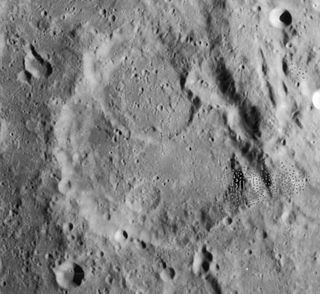
Catharina is an ancient lunar impact crater located in the southern highlands. It was named after Saint Catherine of Alexandria. It lies in a rugged stretch of land between the Rupes Altai scarp to the west and Mare Nectaris in the east. To the west-northwest is the crater Tacitus, and the lava-flooded Beaumont lies to the east along the shore of Mare Nectaris. To the south-southeast is Polybius.
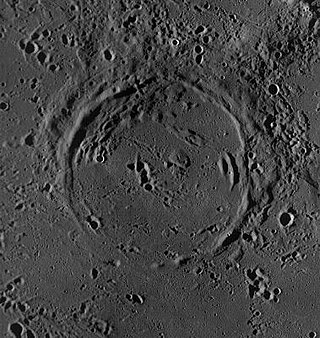
Daguerre is a circular formation near the north end of Mare Nectaris. To the west-northwest is the crater Mädler, and beyond it to the west is the prominent Theophilus. To the north in the rugged continental area between the maria is Isidorus.
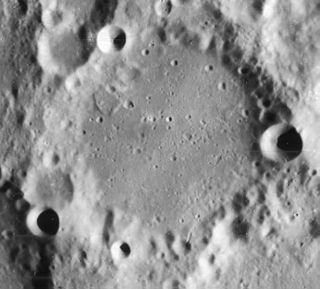
La Caille is a lunar impact crater located in the rugged south-central highlands of the Moon. It was named after the French astronomer Nicolas-Louis de Lacaille. It is located to the northeast of the crater Purbach. Nearly attached to the southeast rim are the remains of Blanchinus, and the two are separated by a rugged stretch of terrain. To the northeast is Delaunay, a formation split in half by a ridge.

Archytas is a lunar impact crater that protrudes into the northern edge of Mare Frigoris. To the northwest is the comparably sized crater Timaeus, and the smaller Protagoras lies in the opposite direction to the southeast. Further to the southwest, beyond the opposite edge of the mare, is the dark-floored crater Plato.

Asclepi is a heavily eroded lunar impact crater that lies in the rugged southern highlands of the Moon. The outer rim has been worn down and rounded by many millions of years of subsequent impacts, so that it is now nearly level with the surrounding terrain. As a result, the crater is now little more than a depression in the surface. The interior is nearly flat and relatively featureless.

Blanchinus is a lunar impact crater that is situated in the rugged south-central highlands of the Moon. The crater is named after Italian astronomer Giovanni Bianchini whose Latinized name is Blanchinus. Adjacent to the south of Blanchinus is the crater Werner, and La Caille is attached to the northwest rim. West of the crater is the prominent formation Purbach.

Bragg is an ancient lunar impact crater that is located on the far side of the Moon, just beyond the northwest limb. This formation has been heavily eroded and reshaped by subsequent impacts, leaving an irregular depression in the surface. The most intact portion of the rim is along the western face, while the northern and eastern rim has been nearly worn away and is overlaid by several smaller craters. The most notable of these is Bragg H, which lies across the east-southeastern rim.
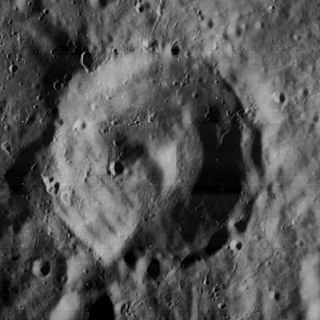
Ball is a lunar impact crater that is located in the rugged southern highlands of the Moon. It was named after British astronomer William Ball. The formation is circular and symmetrical, and has received little significant wear. The interior is rough-surfaced, curving downward toward the relatively wide central peak at the midpoint.

Brenner is an old lunar impact crater that lies in the rugged southeastern part of the Moon's near side. It is named after the Serbian-Austrian astronomer Spiridon Gopčević. It is located within one crater diameter northwest of the crater pair Metius and Fabricius.

Blanchard is a lunar impact crater that lies on the far side of the Moon, just behind the southwestern limb. It lies to the south-southwest of the crater Arrhenius, and northwest of Pilâtre. Further to the south is the rugged terrain to the north of the walled plain Hausen.

Boussingault is a large lunar impact crater that lies near the rugged southeast limb of the Moon. Because of its location, Boussingault appears highly oblong in shape due to foreshortening. To the southwest is the crater Boguslawsky, and almost attached to the northeast rim is Helmholtz. East-southeast of Boussingault lies the crater Neumayer.

Bredikhin is a lunar impact crater that is located on the far side of the Moon. It lies just to the west of the crater Mitra, and northeast of Raimond.

Feuillée is a small lunar impact crater in the eastern part of the Mare Imbrium. It was named after French natural scientist Louis Feuillée. It lies less than a half crater diameter to the northwest of Beer, and the two formations form a nearly matched pair. To the west is the small but prominent crater Timocharis.

Esclangon is a lunar impact crater that is located in the rugged terrain to the northwest of the prominent crater Macrobius, and east of Sinus Amoris. Its diameter is 15 km. It was named after French astronomer Ernest Esclangon. This formation was previously designated Macrobius L. Just to the west-southwest is the crater Hill. Lacus Bonitatis, the Lake of Good, is located to the east and northeast of Esclangon.
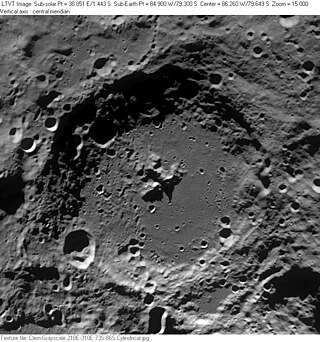
Drygalski is a large lunar impact crater that lies along the southern limb of the Moon. It partly overlies the crater Ashbrook to the west on the far side of the Moon. Just to the north of Drygalski is the smaller Boltzmann. The location of this crater restricts its observation from the Earth, and even under conditions of favorable libration it is viewed from the edge. It is only illuminated by the Sun at an oblique angle, and it lies close to the south polar craters that are permanently shielded from sunlight.
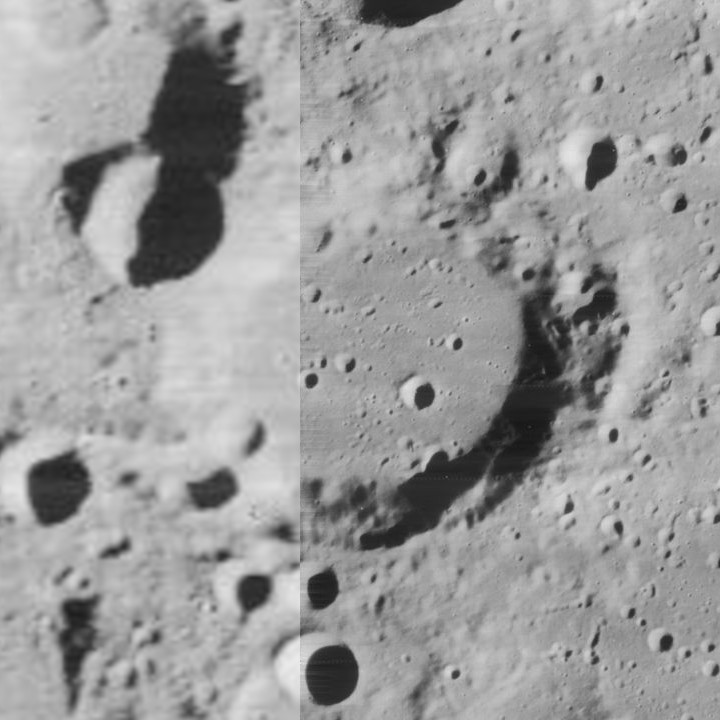
Cleostratus is a lunar impact crater near the northwest limb of the Moon. It lies to the northeast of the crater Xenophanes, and west-southwest of the prominent Pythagoras. From the Earth this crater appears highly elongated due to foreshortening.

Clairaut is a lunar impact crater that is located in the rugged southern highlands of the Moon's near side. It lies directly to the south of the crater Maurolycus and southeast of Barocius. Just to the southwest is Cuvier.

Chapman is a lunar impact crater that lies just beyond the northwest rim of the Moon, on the far side as seen from the Earth. It lies to the northeast of the crater Rynin, and southward of the large walled plain Poczobutt.

G. Bond is a small lunar impact crater to the south of the Lacus Somniorum, a small lunar mare in the northeast part of the Moon's near side. It was named after the American astronomer George Phillips Bond. It lies to the east of the larger crater Posidonius, and to the south of the flooded crater remnant Hall. The crater is situated in a rugged section of terrain to the northwest of the Montes Taurus mountain region.

Louville is a lunar impact crater that is located on the western edge of the Sinus Roris, a bay in the northern part of the Oceanus Procellarum. It lies to the northwest of the crater Mairan, on a triangular section of continental terrain to the west of Sinus Iridum and the Mare Imbrium.























